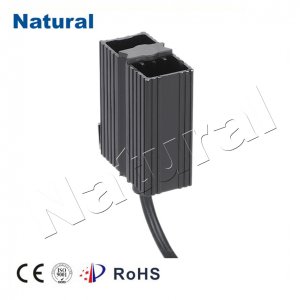Introduction

In the realm of heating technology, PTC (Positive Temperature Coefficient) heater elements have emerged as a groundbreaking innovation. These versatile components have revolutionized the way we approach heating solutions, offering efficiency, safety, and adaptability like never before. This article delves into the world of PTC heater elements, exploring their working principle, advantages, applications, and their impact on various industries. Understanding PTC Heater Elements
PTC heater elements are electrical components that possess a unique property: their resistance increases with rising temperature. This stands in contrast to traditional heating elements, which have a linear relationship between resistance and temperature. The crucial factor behind this behavior is the intrinsic material used in PTC elements. As temperature increases, the material's crystal structure transforms, leading to an exponential rise in resistance and a controlled reduction in power consumption.
Advantages of PTC Heater Elements
Self-Regulation: One of the most significant advantages of PTC heater elements is their self-regulating nature. As the element heats up, its resistance spikes, which in turn limits the amount of power flowing through it. This characteristic eliminates the need for external temperature controls, making PTC elements highly efficient and cost-effective.
Safety: PTC heater elements are inherently safer than traditional elements. The self-regulating feature prevents overheating, drastically reducing the risk of fires. Additionally, their non-linear resistance-temperature relationship ensures that as the ambient temperature increases, the element's output heat decreases, preventing dangerous temperature spikes.
Longevity: PTC heater elements have a longer lifespan compared to traditional elements. Their self-regulation prevents stress on the element itself, leading to reduced wear and tear and, consequently, a prolonged operational life.
Energy Efficiency: The self-regulating nature of PTC elements translates into energy efficiency. As the element's resistance increases with rising temperature, less energy is consumed during steady-state operation, resulting in energy savings.
Applications Across Industries
Automotive Industry: PTC heater elements find extensive use in automotive applications, such as car seat heaters, defoggers, and HVAC systems. Their rapid response to temperature changes and self-regulation contribute to passenger comfort and safety.
Consumer Electronics: PTC heater elements are used in hair dryers, curling irons, and space heaters. Their safety features and precise temperature control ensure safe operation and optimal user experience.
Medical Devices: Medical devices like blood analyzers, nebulizers, and warming blankets utilize PTC heater elements for their reliability and accuracy in maintaining specific temperatures.
Industrial Processes: PTC heater elements play a role in various industrial processes, including plastic molding, drying applications, and food processing. Their self-regulation capabilities contribute to consistent and controlled heating.
Green Energy: PTC elements are employed in renewable energy systems, such as solar water heaters and wind turbine control systems. Their energy efficiency aligns with the goals of sustainable energy production.
Conclusion
The advent of PTC heater elements has marked a significant advancement in heating technology. Their ability to self-regulate, enhance safety, promote energy efficiency, and adapt to various applications across industries demonstrates their multifaceted benefits. As technology continues to evolve, PTC heater elements are poised to play a pivotal role in shaping the future of heating solutions, promoting both comfort and sustainability.
 28 items Patent
28 items Patent
 28 items Patent
28 items Patent
 28 items Patent
28 items Patent








